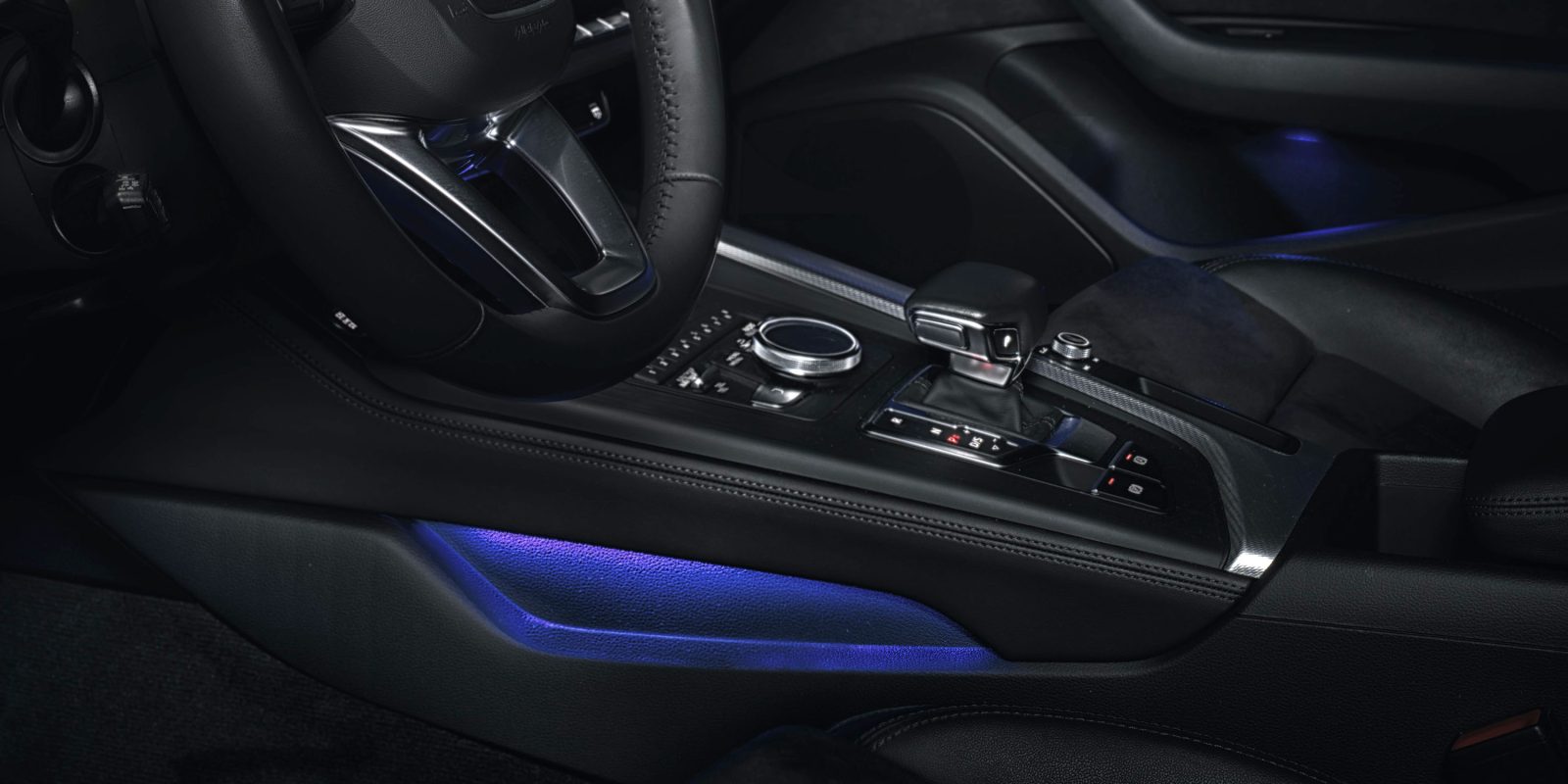
An Apple Car patent granted today describes smart in-car lighting, able to intelligently determine what the occupants are likely to want or need at any given moment.
One example cited in the patent describes a frustrating experience we’ve all had …
Apple opens by describing a common problem with interior lighting – hunting for something we’ve dropped into the footwell.
Conventional vehicle interior lights are static and typically vehicle occupants have to control the lights using a switch or a physical button. A conventional vehicle interior light may only illuminate a limited area while failing to illuminate large swaths of the interior of the vehicle.
As an example, the vehicle occupant may be attempting to find an object dropped onto the floor of the vehicle at night. When the occupant turns on a light mounted on the roof of the vehicle, the light may not be helpful because the occupant’s body may create a shadow or the light may not illuminate a correct location within the vehicle. Objects within the vehicle also may be difficult to view based on limited lighting options in the interior of the vehicle. In short, a vehicle with conventional lighting would benefit from many improvements.
The solution, says Apple, is to take a zone-based approach to lighting, and then use a mixture of sensors and cameras to figure out what is happening and how to automatically adapt the lighting to suit.
A system includes a vehicle with a computing device and lighting hardware modules. Briefly described, and according to one embodiment, aspects of the present disclosure generally relate to systems and methods for providing adjustable lighting that utilizes sensors and imaging devices of the vehicle to intelligently illuminate a particular object, location, or zone within an interior of the vehicle.
That might be intelligently switching individual lights on and off, or it might mean a motorized spotlight tracking to the object you’re trying to see.
Receive a lighting control signal based on the information received from the sensors, and activate N time multiplexed adjustable and controllable spotlights, each spotlight produced in a respective timeslot based on the lighting control signal.
Another example would be cameras detecting that you’re taking out a book, magazine, or papers while sitting in a rear seat, and automatically switching on a reading light. If you subsequently fall asleep while reading, the cameras would detect your eyes closing and automatically switch off the reading light.
In a self-driving car, the lighting can also be used to gently wake you.
An occupant may be located in a front zone of the vehicle while the vehicle is autonomously traveling from a first location to a second location at night. As the vehicle begins to approach the destination, the vehicle may automatically and gradually turn an adjustable spotlight on to gradually wake the occupant of the vehicle.
The patent of course allows for Siri control, too.
The lighting system recognizes the objects, locations, and zones within the vehicle to be illuminated and responds to explicit requests or commands for illumination.
Via Patently Apple. Photo by Michal Soukup on Unsplash.
FTC: We use income earning auto affiliate links. More.



Comments